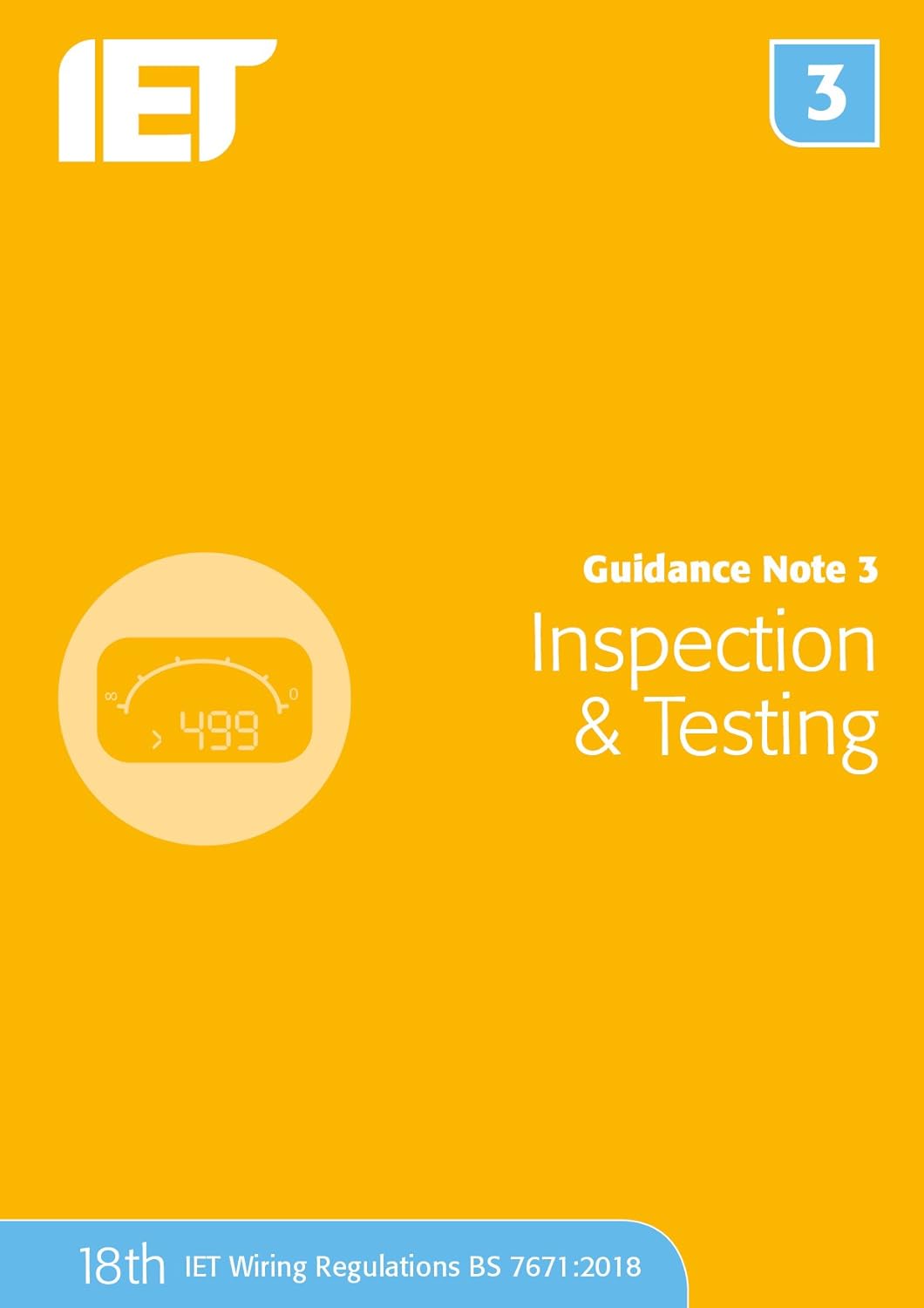
Guidance Note 3: Inspection & Testing (Electrical Regulations)
FREE Shipping
Guidance Note 3: Inspection & Testing (Electrical Regulations)
- Brand: Unbranded

Description
When this has been conducted, candidates will gain an understanding of what circuit failure is apparent through their ohms reading. The specific ohms volumes registered would correspond to the following circumstances: The inspection and testing of an installation must only be carried out by (electrically) skilled persons with sufficient knowledge and understanding of electrical installations.
There is no longer a requirement to perform a test using a test current equal to or higher than five times the rated residual current. What is an alternating current test? It is not normally necessary to inspect and test every single circuit, point and accessory within the installation due to the size and the costs that may be involved. However, you should inspect and test enough of the installation to be able to form an educated opinion on its overall condition. Any observations noticed by the inspector during the inspection and testing is required to be recorded on an Electrical Installation Condition Report (EICR) and a classification code attributed according to the degree of urgency. I suggest you go and measure Zs on a real system with a real meter early in the morning, then go out for lunch and polish the meter probes and re-test with the same meter at the same point in the afternoon. The two readings will be both as valid, but are unlikely to be the same in all digits. As an aside what meters do you suggest with this accuracy (not precision) ? Note that two half lengths of meter lead is a good few milli-ohms on its own. I have used both Fluke and Meggar machines and neither is this good.Skilled person (electrically). Person who possesses, as appropriate to the nature of the electrical work to be undertaken, adequate education, training and practical skills, and who is able to perceive risks and avoid hazards that electricity can create. There is a large element of "measure with a micrometer, mark in chalk, cut with an axe" about the decision about what is an acceptable Zs level for a given breaker anyway, in the sense it is a very accurate calculation of something that does not happen - for example if faults actually were zero resistance, they would not actually dissipate any energy and would not get hot - as I'm sure you realise looking at any burnt end will confirm this is not the case ?. In some cases, it may be necessary to agree limitations to the report. This should be clearly noted in the agreed limitations section. It could be that the inspection and testing does not cover products such as fixed equipment connected to the installation, it is important this is made clear on the report. F1: Further investigation required. Applies were the inspection or testing has revealed a possible problem which could not be full identified due limitations placed upon the inspection and test. This can be a problem as it must be assumed that after further investigation a C1 or C2 classification code would apply.
This publication ONLY details information regarding the installation and testing of electrical systemsPredicted measured resistance = r y//r g = 0.3515×0.6511 ÷ (0.3515+0.6511) = 0.2283 Ω Step 3, resistance at Test Point 3 The type of test is selected on the instrument according to the RCD type. When the instrument setting selected is for an AC Type RCD, the test current applied is a 50 Hz alternating current. However, when the instrument setting selected is an A Type RCD, a pulsed direct current (DC) is superimposed on the 50 Hz AC waveform.
- Fruugo ID: 258392218-563234582
- EAN: 764486781913
-
Sold by: Fruugo
